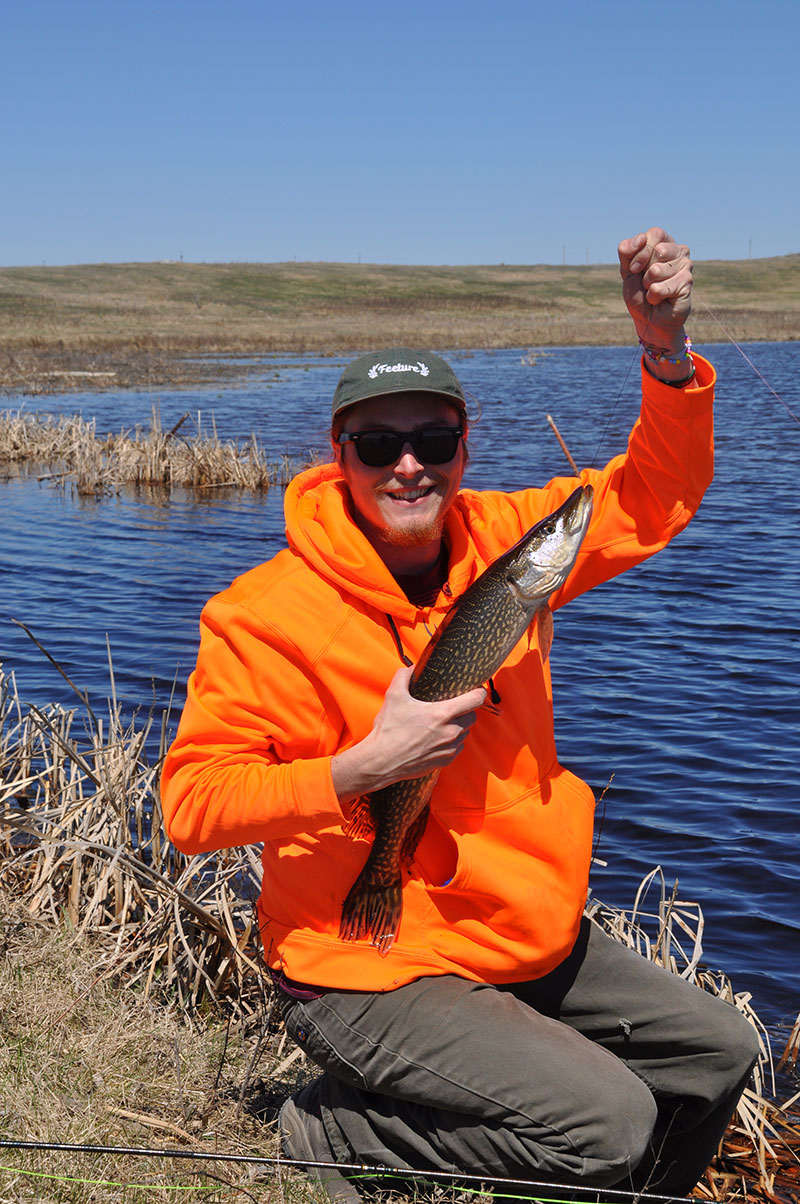Back Cast

Years ago I often fished with a guy who, while driving to whatever river, lake or farm pond we were headed to, would shout over the thumping from his 8-track player, “That’s a good sign.”
Without even turning my head, I knew he was shouting about cows. He theorized if the fenced-in cows we passed were up and grazing, and not lazing in the shade doing nothing, then the bluegills, bass or whatever we were headed to fish for were doing likewise, actively feeding on bugs and tadpoles, rather than sulking under submerged vegetation.
I don’t remember him being either right or wrong. What I do remember is fishing, always fishing, and never turning for home simply because the local livestock was lying down.
When my son, in late April, found an empty turtle shell in the middle of a mile-long footpath that led to what had been described as some decent pike fishing, we joked if it was some kind of sign, good or bad.
We decided that it was bad for the turtle, likely killed by a predator, and the meat eaten entirely by scavenger beetles. And what it meant to us, we figured, probably didn’t matter.
Our good fortune rested in the fact that my son, 23, had caught a short break from work. For a few days he could forget about counting sharp-tailed grouse on leks, surveying raptors, checking water quality of running and still waters and clicking a pitch counter every time he heard a ring-necked rooster call in early morning in the distance.
Putting a mile between where we parked and the small back bay of a Burleigh County lake, I figured we’d have the place to ourselves. Save for a handful of ducks and a pair of long-legged American avocets that waded a shallow flat beyond a submerged barbed wire fence, we did.
Two hours later, with enough pike landed to make the hike back to the road certainly worth the effort, we put on our backpacks and left the water to the wading birds.
Two days later, four of us, my two sons and a friend from work, were hiding in a makeshift blind of fallen cottonwood limbs, trying to convince a wild turkey, any male turkey, long-bearded or not, that our three decoys were more than rubber imitations.
Early, long before the sun would peak through the trees and warm our hideout in the bottom of a draw, two hens marched within 50 yards, with little pause, and left as quickly as they arrived.
While a handful of toms gobbled out of sight on three points of the compass, one talked to us in the open from a ridgetop to the east, displaying his arched tail, spread to full width.
On the hike out, up one draw and down another, the wildlife biologist in the group found a turkey egg, with what remained of the yellow yolk spilling onto a flat rock.
A cool find, certainly, but not something like a turtle shell that you’d drop into the side pocket of your backpack and take home.
